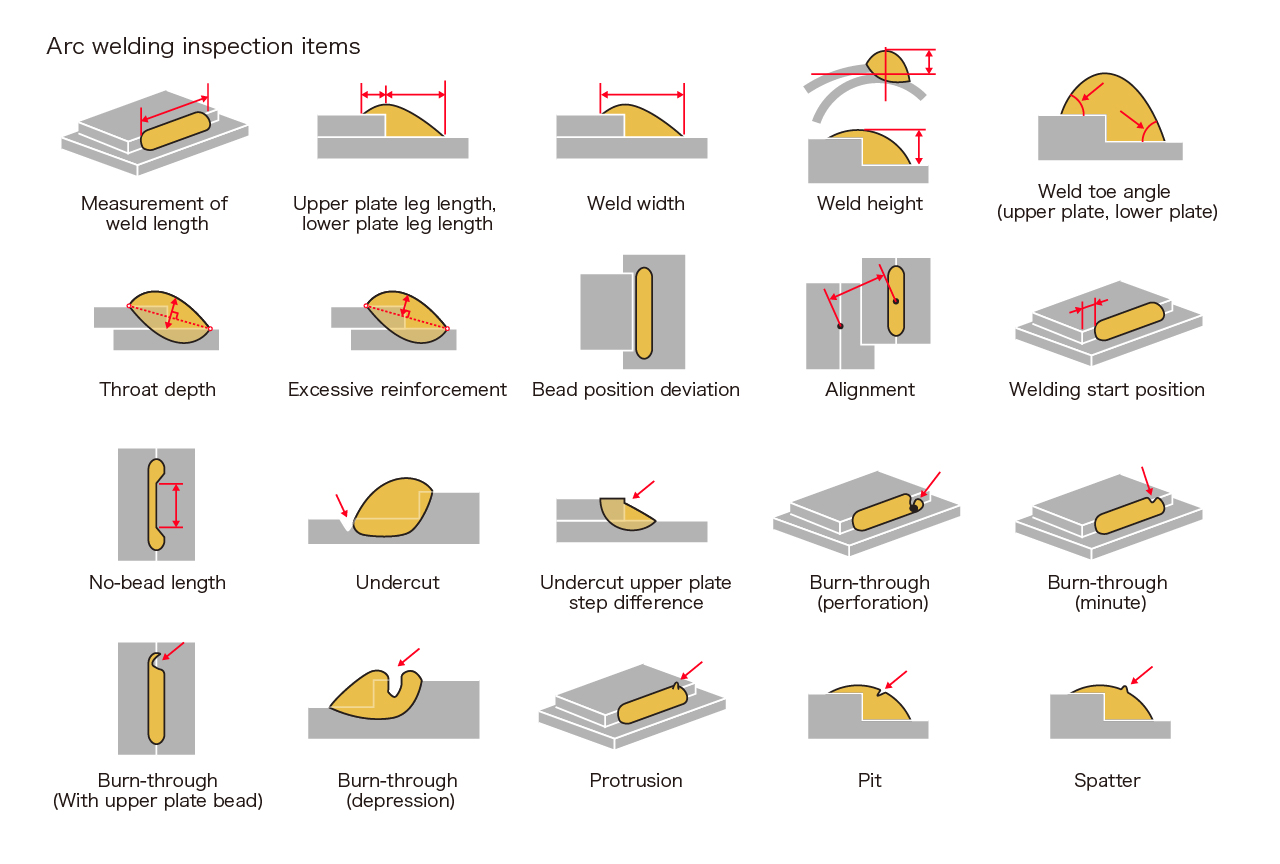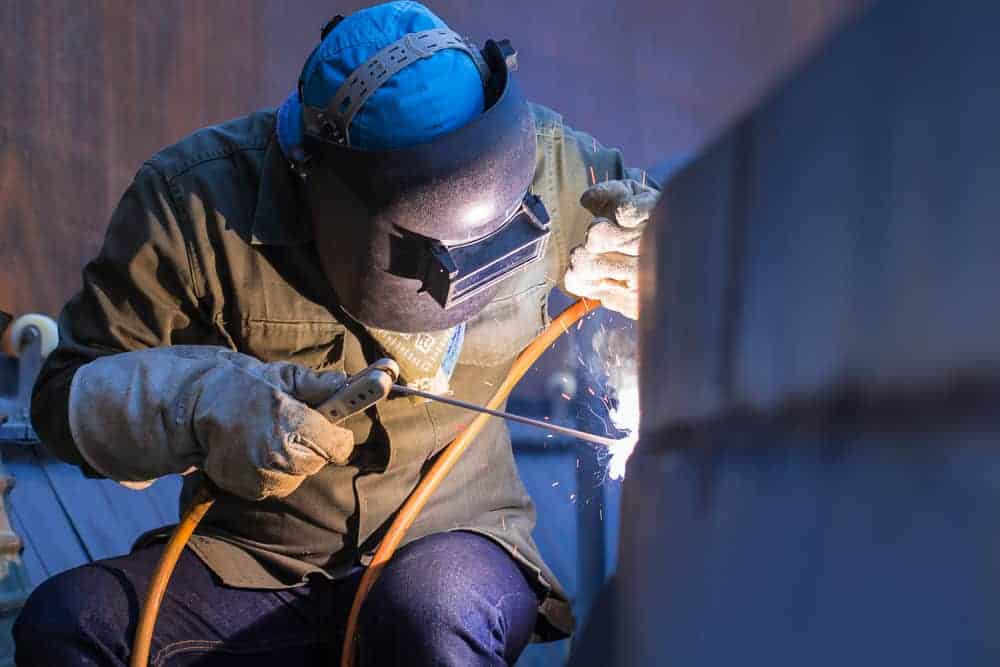A Comprehensive Guide to Recognizing Exactly How Welding Examination Functions: Strategies, Requirements, and Finest Practices for Top Quality Assurance in Steel Fabrication
Comprehending the details of welding assessment is vital for preserving the honesty of steel fabrication. Applying finest techniques can substantially enhance high quality guarantee procedures. The landscape of welding assessment is not without its difficulties.
Significance of Welding Examination
Although welding is a vital procedure in different sectors, its integrity straight impacts the security and efficiency of components and frameworks. Reliable welding evaluation is crucial for identifying flaws that could jeopardize the high quality and resilience of bonded joints. This procedure ensures adherence to established specs and criteria, which are vital for preserving architectural honesty and functional dependability.
Welding assessment offers multiple functions, consisting of validating that the welding process has been performed appropriately, analyzing the quality of materials utilized, and confirming that the ended up item satisfies governing and sector requirements (Houston Welding Inspection). Through extensive assessment, potential problems such as porosity, fractures, and insufficient blend can be detected early, avoiding expensive repair work and alleviating security risks
Furthermore, constant welding evaluations foster confidence among stakeholders, including engineers, clients, and regulatory bodies, by showing a dedication to quality control. The value of welding assessment can not be overstated; it is essential not only for compliance with lawful needs yet likewise for improving the general performance of bonded structures. Inevitably, a robust welding examination program is a positive step that safeguards versus failings, making sure the long life and integrity of welded components in their intended applications.
Usual Welding Examination Strategies

Aesthetic inspection is the first line of protection, allowing assessors to recognize surface defects such as splits, damages, or incomplete blend. Radiographic testing utilizes X-rays or gamma rays to disclose interior flaws, making it ideal for intricate welds. Ultrasonic testing employs high-frequency acoustic waves to discover subsurface problems, providing exact measurements of weld honesty.
Magnetic bit testing works for ferromagnetic materials, highlighting surface area and near-surface interruptions when particles are related to an electromagnetic field. Conversely, color penetrant testing makes use of a fluid color to reveal surface-breaking flaws, guaranteeing that also the smallest imperfections are discovered.
Each technique has its strengths and constraints, usually requiring a mix of methods for detailed assessment - Houston Welding Inspection. By using these inspection methods, top quality assurance in steel fabrication is attained, guaranteeing that bonded frameworks meet security and efficiency standards
Market Standards for Welding


The American Welding Society (AWS) and the American National Specification Institute (ANSI) are 2 famous companies that develop welding standards. AWS D1.1, for instance, details the needs for welding steel frameworks, while AWS D1.2 concentrates on aluminum. Internationally, the ISO 3834 conventional addresses high quality demands for blend welding, giving a structure relevant throughout nationwide boundaries.

Best Practices for Quality Control
Quality guarantee in welding is critical to attaining resilient and secure constructions. Developing a comprehensive top quality management system (QMS) tailored to the details welding project is necessary.
Regular training and qualification of welding personnel are crucial for keeping a competent labor force. Continuous education on the most up to date welding techniques my company and innovations makes certain that inspectors and welders are experienced concerning current requirements and methods.
Furthermore, carrying out pre-weld inspections to assess products and equipment can avoid flaws prior to they take place. Houston Welding Inspection. During the welding process, real-time tracking and paperwork of welding criteria aid identify incongruities quickly. Post-weld evaluations must involve extensive assessments making use of non-destructive screening (NDT) approaches to ensure the integrity of the welds
Additionally, maintaining clear communication among employee advertises a society of quality. Regular audits and reviews of the welding process help identify areas for improvement. By adhering to these best practices, organizations have a peek at this site can achieve optimum top quality guarantee, ultimately bring about boosted safety and security and efficiency in steel construction jobs.
Difficulties in Welding Evaluation
Although welding evaluation is crucial for guaranteeing structural integrity, it offers a selection of difficulties that can make complex the analysis process. One significant difficulty is the variability in welding techniques and materials made use of, which can impact the consistency of weld quality. Various welders may employ differing techniques, resulting in discrepancies that inspectors requirement to determine and assess.
One more challenge entails the detection of defects. Non-destructive screening (NDT) techniques, such as ultrasonic and radiographic screening, can be complicated and require knowledgeable service technicians to interpret outcomes precisely. Incorrect positives or negatives can happen, potentially resulting in expensive rework or compromised safety and security.
Furthermore, the visibility of environmental factors, such as temperature level and humidity, can affect the integrity of welds and the efficiency of inspection strategies. Examiners must likewise browse the regulative landscape, ensuring compliance with sector requirements, which can differ by jurisdiction and application.
Final Thought
Finally, welding inspection plays an essential role in making certain the stability and safety and security of metal fabrication. Using a variety of evaluation strategies, adhering to well established sector standards, and carrying Get More Info out reliable quality administration techniques jointly enhance the reliability of bonded frameworks. Regardless of the challenges dealt with in the examination procedure, a commitment to constant enhancement and adherence to ideal techniques can dramatically bolster the quality control framework, fostering higher self-confidence amongst stakeholders in the welding industry.
Effective welding evaluation is necessary for recognizing defects that could compromise the high quality and toughness of bonded joints.In addition, regular welding inspections foster confidence among stakeholders, including engineers, clients, and regulatory bodies, by demonstrating a commitment to high quality guarantee.The American Welding Society (AWS) and the American National Criteria Institute (ANSI) are 2 noticeable organizations that develop welding requirements. During the welding process, real-time tracking and paperwork of welding parameters help identify disparities right away. In spite of the difficulties faced in the inspection process, a dedication to continual renovation and adherence to finest methods can significantly bolster the top quality guarantee framework, fostering better self-confidence amongst stakeholders in the welding market.